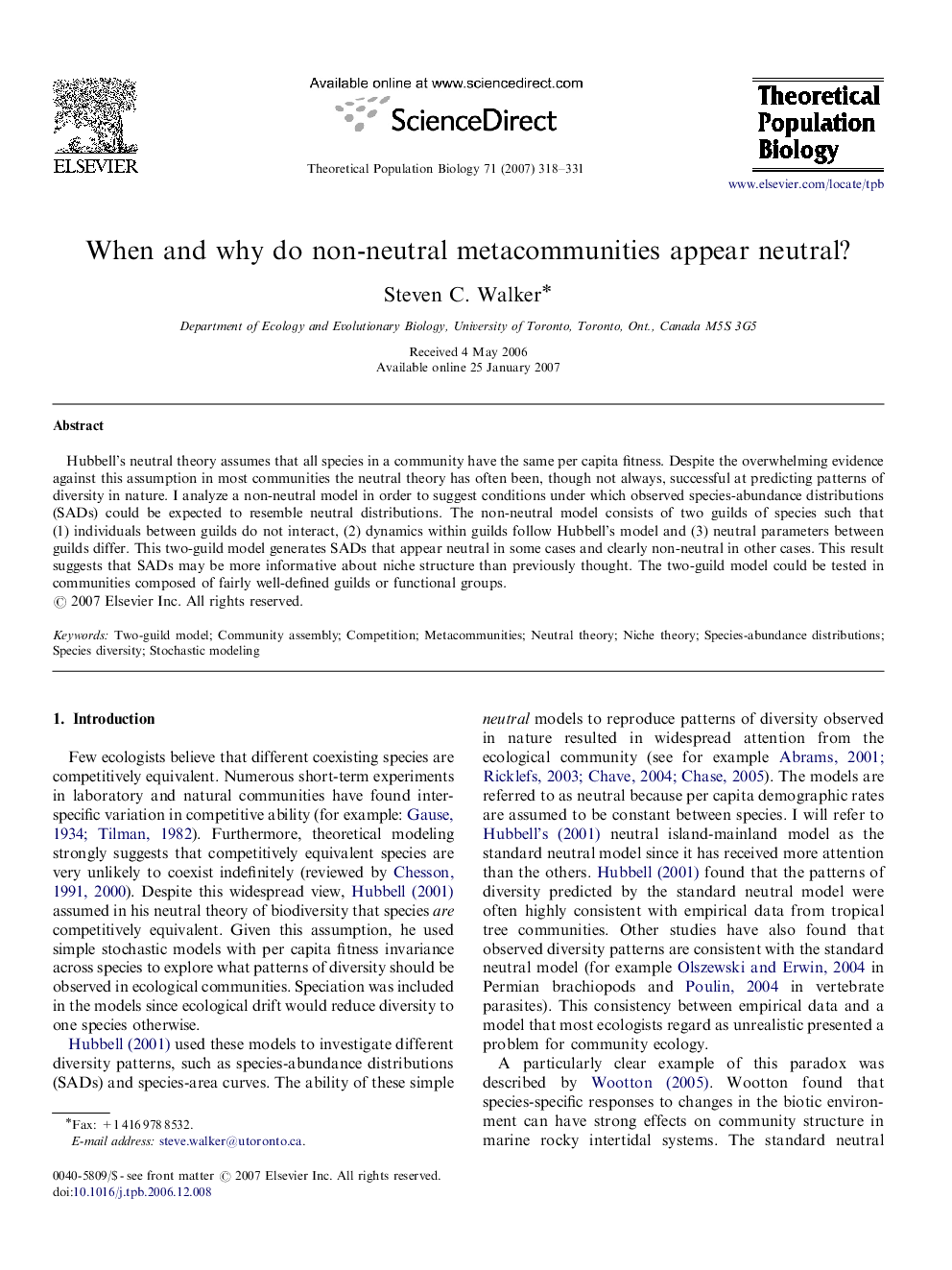| Article ID | Journal | Published Year | Pages | File Type |
|---|---|---|---|---|
| 4502761 | Theoretical Population Biology | 2007 | 14 Pages |
Hubbell's neutral theory assumes that all species in a community have the same per capita fitness. Despite the overwhelming evidence against this assumption in most communities the neutral theory has often been, though not always, successful at predicting patterns of diversity in nature. I analyze a non-neutral model in order to suggest conditions under which observed species-abundance distributions (SADs) could be expected to resemble neutral distributions. The non-neutral model consists of two guilds of species such that (1) individuals between guilds do not interact, (2) dynamics within guilds follow Hubbell's model and (3) neutral parameters between guilds differ. This two-guild model generates SADs that appear neutral in some cases and clearly non-neutral in other cases. This result suggests that SADs may be more informative about niche structure than previously thought. The two-guild model could be tested in communities composed of fairly well-defined guilds or functional groups.
